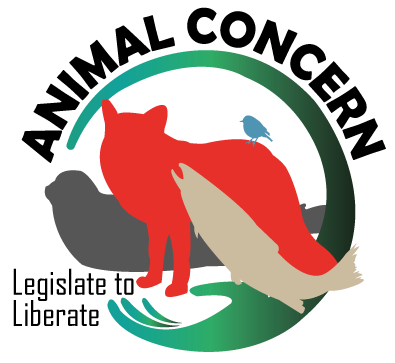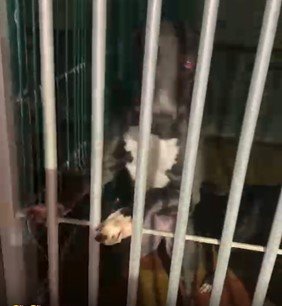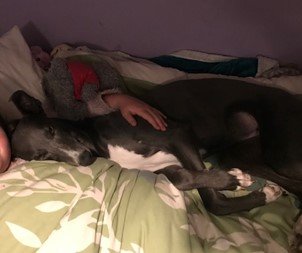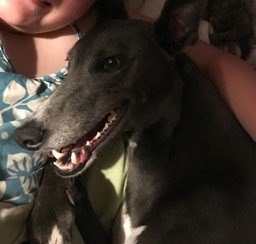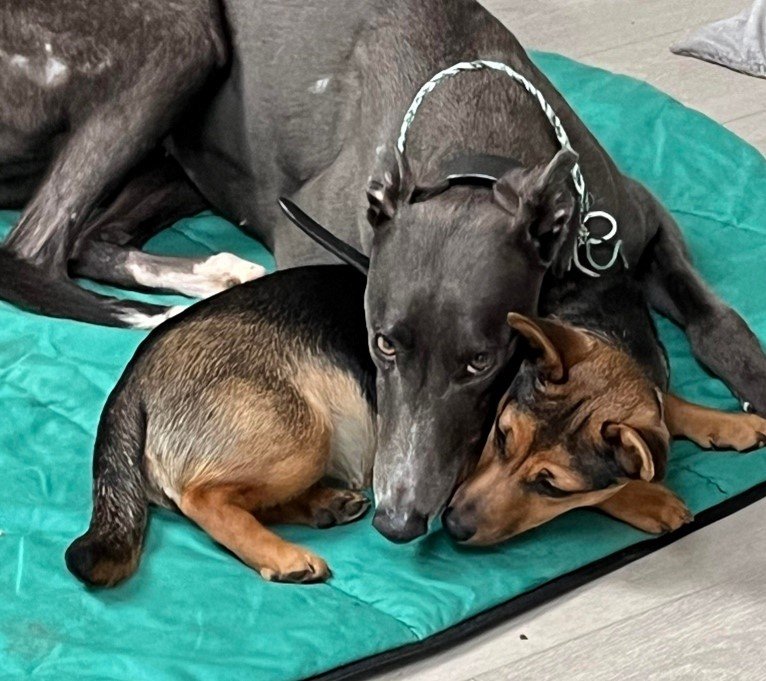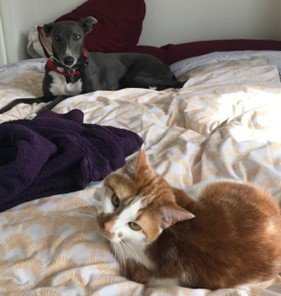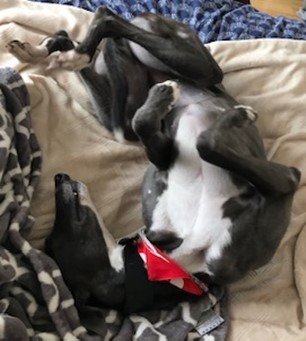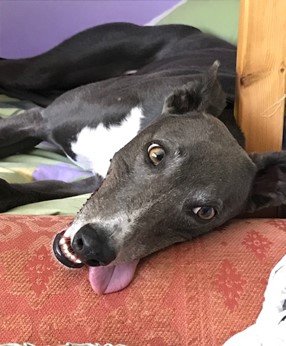The Greyhound who did not want to race
According to her passport, Sylvie (as renamed when adopted) was born in Ireland on the 13th of May, 2020. She ran 21 races by the age of 2, before being taken off the track for unknown reasons and put in a kennel with other dogs, where her muscles deteriorated as she waited to be rehomed by someone who took on the task of rehoming ex-racers. She was one of the lucky ones to be rehomed and not killed.
When she came to me, she had a muzzle on, wounds on her flank with dried blood, a bald backside, overly long nails and her ribs were painfully obvious. Her legs had lost all muscle tone and she struggled to get up and down stairs. I had to lift her into my car.
Knowing little to nothing about her, I was unsure if we could keep her as our two rescue cats needed to be considered but I needn’t have worried. Though instructed to keep her muzzle on as her behaviour around small animals was unknown, I couldn’t bear watching her trying to rub it off and removed it. From the first moments of encountering our cats, Sylvie was more scared than interested in chasing them, averting her eyes when they were near.
Not a mean bone in her, Sylvie loves watching the rabbits hop around and now shares a bed with the cats.
She was timid and frightened of so much, including people (men in particular). The first time she encountered geese and ducks at a pond she ran away. She didn’t seem to know how to be a dog. Play was foreign to her. Upon seeing other dogs on a walk, she would freeze and not move until they had either walked past or had sniffed her in a friendly manner - her way of disengaging.
Yet as soon as she met my two children her tail wagged, and it wags whenever she encounters children. She will even bark at my daughter when she wants her to go to bed for cuddles!
Sylvie blossomed as she gained confidence, thriving on having a family to love her. Despite warnings from other greyhound rescuers that she wouldn’t be able to go off lead, within only a few weeks of training she would come bounding back with a whistle and call of her name, always wanting to be close to her people.
In the past 6 months she has become a vibrant, goofy and loving character, gentle with the smallest creatures (her best friend Angel the Jack Russell terrier likes to put her head in Sylvie’s mouth and she’s not lost it yet!), happy hanging around the ponies at the rescue sanctuary, and trying out all the sofas and beds in the house.
She has come a long way from when she arrived as the scared, weak, timid dog she was, now playing with toys (a very funny sight) and even trying to play with the cats when not sharing a bed with them.
Sylvie is one greyhound who has landed on all four paws, who now only runs for the sheer joy of it.
All greyhounds deserve this chance to be the best and happiest versions of themselves.
Too many people don’t understand why the Greyhound racing industry is cruel. “But dogs love to run, so what’s the problem?” is a common response to conversations about it. My simple answer is that no animal’s life should be expendable and subject to abuse or neglect. In an industry where a dog’s life is valued only on whether it can run fast enough, where they are discarded like rubbish if they don’t (providing they survive that long) there can be no excuses for it to continue.
Please support our efforts to put a stop to Greyhound racing. #UnboundTheGreyhound
